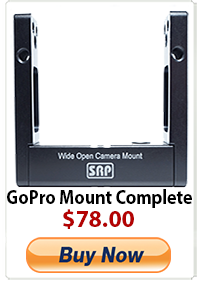Canon EOS-M Video Demo And Specifications.
The specifications on the new Canon EOS-M mirrorless camera are out. The new mirrorless system will indeed have a proper APS-C sized sensor and a few other bells and whistles noted in the press release from BH Photo. I think this will be a great addition to the current Canon line up. The smaller sized mirrorless cameras are great Director’s cameras and can work well as a back up system or B camera. The new EF-M lenses will accompany the EOS-M with a Canon adapter for Canon EF lenses. The $800 price tag is a bit high for the feature set. The video specs look good but are lacking in the high speed department. No 60P Full 1920 X 1080 HD. The Demo Video looks really desaturated and a bit soft at times. For the same dough I would suggest a used Sony NEX5N with a metabones adapter. Nice try Canon. I guess we will have to wait a few months for the EOS-M2.
Here is a rip from the BH Photo Press Release.
“EOS Full HD Movie Mode and Continuous Autofocus
Featuring the ability to record full HD movies in 1080p, the EOS M can record well-rendered video in great detail to an SD/SDHC/SDXC memory card, or through the video out and two mini-HDMI out ports. These HDMI ports also allow you to easily display your photos and videos directly onto an HDTV in real-time. When recording you have the option to choose from a variety of resolutions and frame rates, including 1920 x 1080 at 30, 25, or 24fps. Continuous shooting can last up to 44 minutes on a 16 GB memory card, and half that with an 8 GB card. Full manual control over exposure settings and focus is also supported, providing you with the ability to more easily dictate focus and creative exposure techniques.
Manual audio adjustment is possible across 64 different levels, and sound is recorded via a built-in stereo microphone. Another recently introduced feature unique to video shooting is Video Snapshot; this mode captures short video clips at 2, 4 or 8 seconds and automatically combines them into one reel, giving you something reminiscent of a highlight reel or album.
The most significant technology the EOS M supports in relation to video recording is the Movie Servo AF system, providing continuous focusing and full-time subject tracking while recording. This focusing mode is further benefited by the use of an STM lens with an integrated stepping motor. Aside from quick and precise focusing, the stepping motor is also incredibly quiet while acquiring focus, which is something especially necessary for recording the highest quality video.”
- 18.0 MP CMOS (APS-C) Sensor
- DIGIC 5 Image Processor
- Full HD Movie with Focus Tracking
- 3.0″ Touch Screen LCD with 1040K-dots
- Touch AF and Multi-touch Operation
- Hybrid CMOS Auto-focus for Photo & Video
- Compatible with Canon EF and EF-S Lenses
- ISO 100-12800, Expandable to 25600 (H)
- Canon’s First Mirrorless Camera
- Includes Canon EF-M 22mm F/2 STM Lens
“EF-M 22mm f/2 STM and EF-M 18-55mm f/3.5-5.6 IS STM Lenses
Two lenses are being released in addition the EOS M body, a 22mm f/2 wide angle and an 18-55mm f/3.5-5.6 standard zoom lens. The 22mm f/2 STM lens is equivalent to that of a 35.2mm lens in full-frame format, and offers a moderately wide angle of view. This lens’ bright maximum f/2 aperture aids in low light and action shooting as well as providing greater room for selective focus. The lens construction features one aspherical element for aberration reduction and a circular aperture with 7 diaphragm blades for a soft out-of-focus quality.
The 18-55mm f/3.5-5.6 IS STM lens is a standard length zoom lens equivalent to a 28.8-88mm lens in 35mm format, giving you an apt range of focal lengths for many different situations. This lens features
3 aspheric lens elements for minimizing lens flare and ghosting throughout the entire zoom range as well as providing greater image clarity and fidelity. It has Dynamic IS that provides the image stabilization needed whenever you record video while walking, and this built-in image stabilization, provides up to a 4-stop equivalent reduction in camera shake. It will prove to be especially useful when working at longer focal lengths or when working in dimly lit situations as well.
Both of these lenses feature Canon’s recently introduced STM stepping motor for improved autofocus capabilities that are especially prevalent when working with HD video. The stepping motor provides extra smooth, quiet auto-focusing so there is a noticeable lack of recorded internal noise and smoother transitions while changing focus while recording.
These two lenses provide a solid introductory point for Canon’s mirrorless entry, however they still lack in comparison to the wide range of lenses Canon offers for its general EF lens lineup. However, you can make use of the entire Canon EF range with the EF-M Lens Adapter for full compatibility with both EF and EF-S lenses. The design of the adapter incorporates a tripod collar for use with some of the longest telephoto lenses and it also fully supports all image stabilization and autofocus types found throughout the EF series.”
-
Walter










